Jonathan Erdman
What month do you typically get the most snow?
This should be an obvious answer; either December, January or February, right?
Not necessarily.
Alaska-based climatologist Dr. Brian Brettschneider examined monthly snowfall data from 4,218 observation sites across the United States which receive an annual average of at least 2 inches of snow.
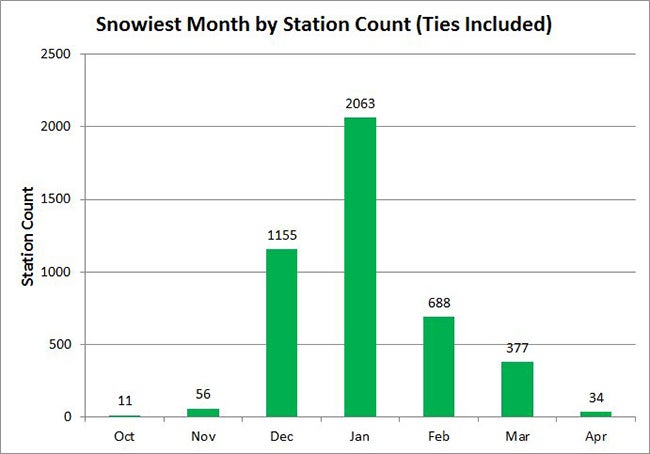 Histogram of the distribution of snowiest months of all U.S. reporting stations with at least 2 inches of snow. For example, March is the snowiest month for 377 reporting stations. In the case of a tie for the snowiest month, each tied month is counted for each station.
Histogram of the distribution of snowiest months of all U.S. reporting stations with at least 2 inches of snow. For example, March is the snowiest month for 377 reporting stations. In the case of a tie for the snowiest month, each tied month is counted for each station.The most common snowiest month among those sites is January, followed by December, then February. You can see this generally depicted in the map below that Brettschneider created.
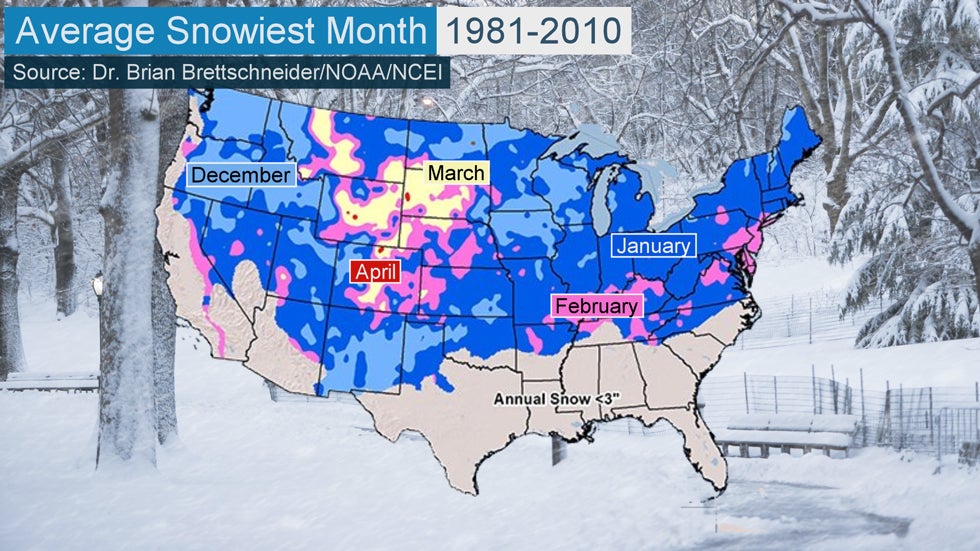
However, 377 locations in the U.S. can say March either is tied or claims the snowiest month title, on average.
For another 101 sites, the snowiest month isn't even in winter.
Brettschneider provided a series of dot maps showing a breakdown of where the typically snowiest locations are each month (if there's a tie for the snowiest month at any location, a dot was plotted in each month).
Let's step through each month, starting with October.
October
"October is the snowiest month in a handful of Alaska stations and nowhere else," said Brettschneider. "This is because the air is so cold during the winter months (in those Alaska locations) that it cannot hold very much moisture."
Utqiagvik (formerly Barrow) with an average of 8.8 inches during the month is the most familiar Alaska location that counts October as its snowiest month most years.
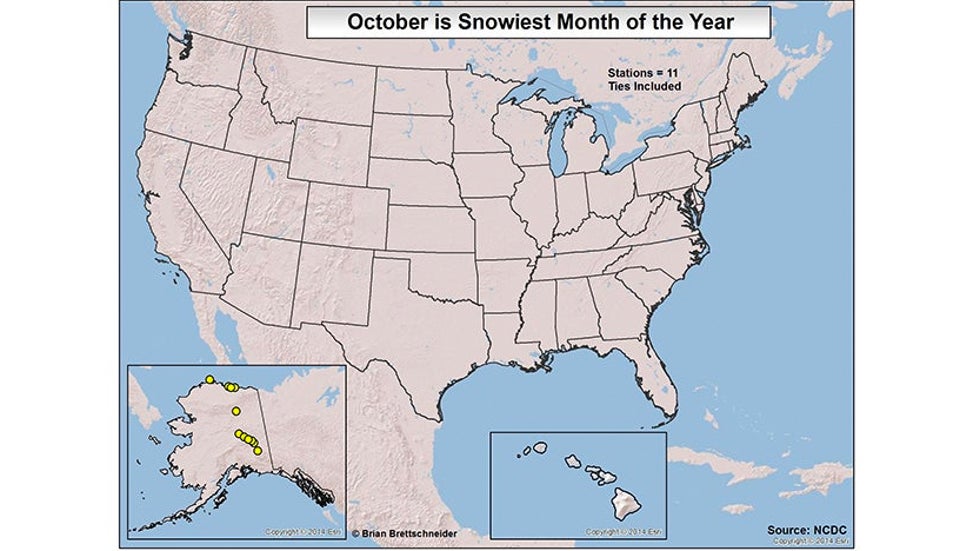 Locations where October is the snowiest month of the year, on average.
Locations where October is the snowiest month of the year, on average.November
While much of the Great Lakes and Northeast may only see their first flakes of snow, parts of the northern Plains, Rockies, Cascades and Alaska see their most snow in November, including:
- Fairbanks, Alaska: 12.7 inches
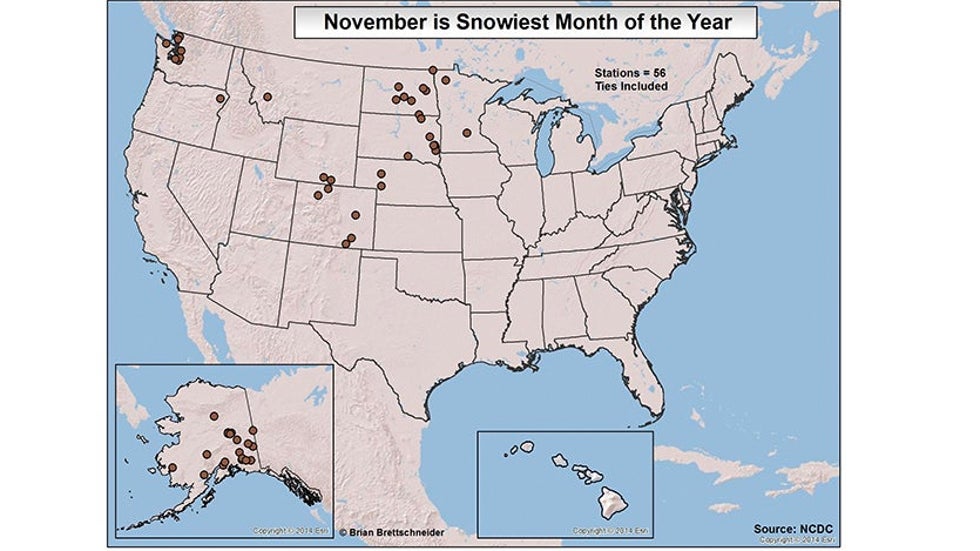 Locations where November is the snowiest month of the year, on average.
Locations where November is the snowiest month of the year, on average.December
Not surprisingly, the number of snowiest month stations skyrockets in December, with the exception of the northeastern quadrant of the contiguous U.S.
Some cities counting the final month of the year as their snowiest month include:
- Madison, Wisconsin: 13.1 inches
- Mt. Rainier's Paradise Ranger Station: 125.2 inches
- Salt Lake City: 12.9 inches
- Wichita, Kansas: 4.2 inches
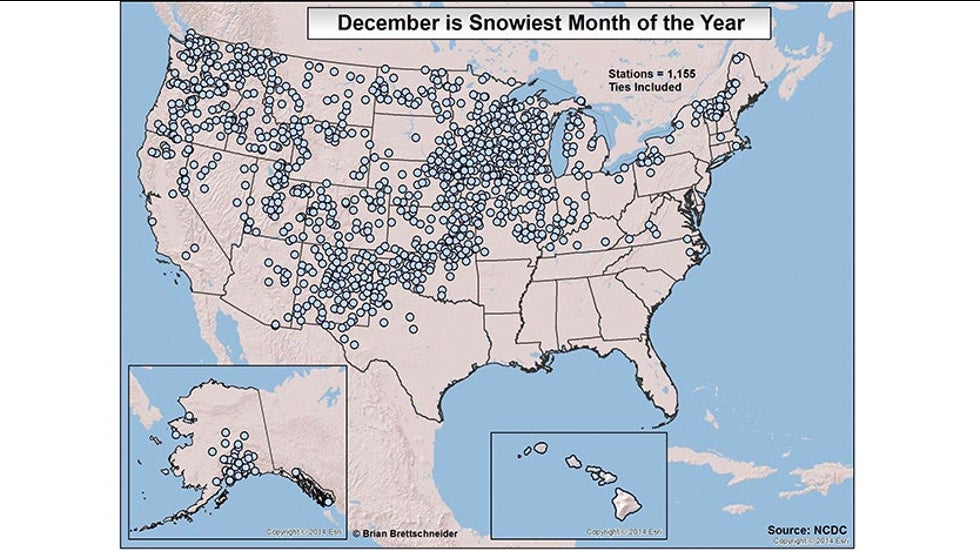 Locations where December is the snowiest month of the year, on average.
Locations where December is the snowiest month of the year, on average.January
You can see the Arctic air's southward plunge when comparing January's map to December. Many more locations in the East and the southern tier of the analysis can call January their snowiest month, including:
- Boston: 13.1 inches
- Chicago: 11.5 inches
- Flagstaff, Arizona: 21.3 inches
- Raleigh, North Carolina: 2.9 inches
- Nashville, Tennessee: 2.5 inches
- Tulsa, Oklahoma: 2.7 inches
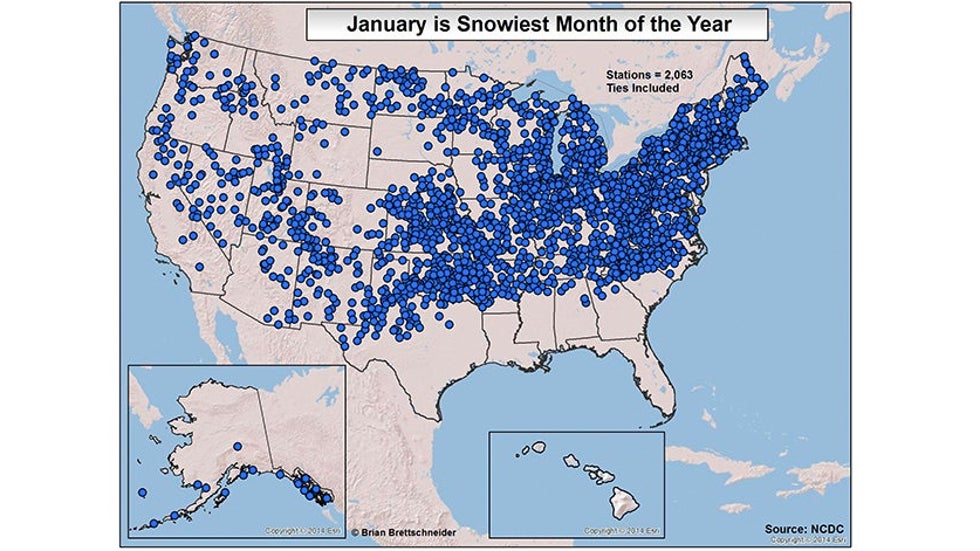 Locations where January is the snowiest month of the year, on average.
Locations where January is the snowiest month of the year, on average.February
You can see the influence of February's notorious East Coast snowstorms in February's dot map. You can almost make out a preferred snow track from the central Plains to the Ohio Valley, then up the East Coast, though February snowstorms sometimes involve just one of those regions.
Also, notice the relative lack of February dots compared to earlier months in the northern tier of states. With winter's cold air firmly established, the storm track is typically pushed to the south.
Some cities where February is the snowiest month include:
- Kansas City (Int'l Airport): 5.3 inches
- Louisville, Kentucky: 4.6 inches
- New York City: 9.2 inches
- Philadelphia: 8.5 inches
- Portland, Oregon: 2 inches
- Tahoe City, California: 40.7 inches
- Washington D.C.: 5.7 inches
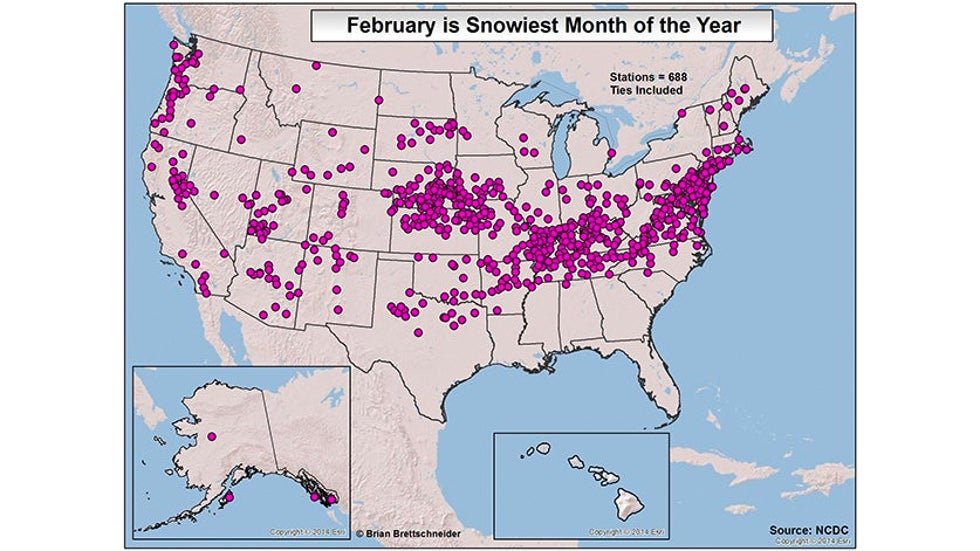 Locations where February is the snowiest month of the year, on average.
Locations where February is the snowiest month of the year, on average.March
A sharp change occurs from February to March. Warmer air returns to the Midwest and East, reducing the frequency and number of winter storms in those locations.
The typically heaviest March snowstorms, injected by Gulf of Mexico moisture making farther northward advances, hammer the northern Plains, High Plains and Rockies.
Some cities where March is the snowiest month include:
- Denver: 10.7 inches
- Great Falls, Montana: 11.9 inches
- Rapid City, South Dakota: 8.6 inches
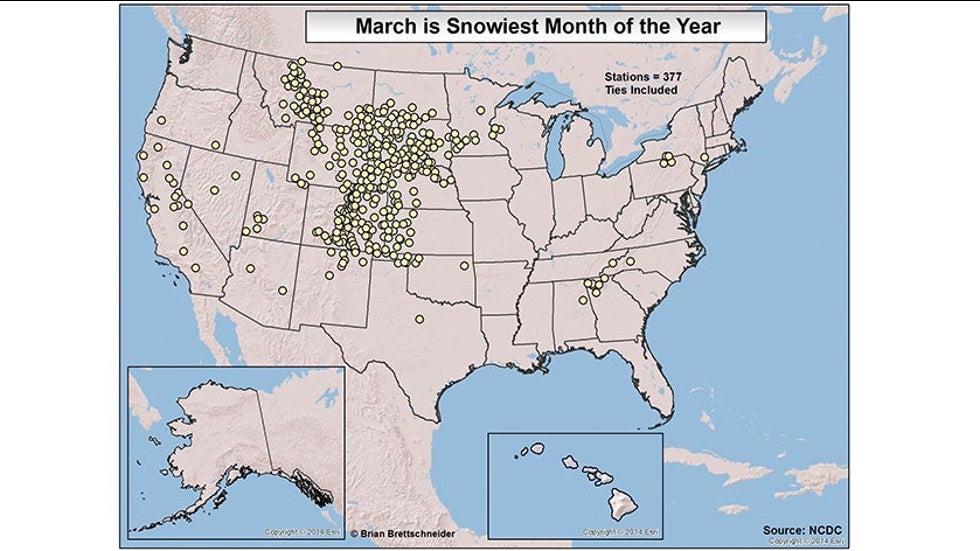 Locations where March is the snowiest month of the year, on average.
Locations where March is the snowiest month of the year, on average.April
Yes, there are even places in the U.S. where April is the snowiest month. So much for spring fever, eh?
These locations are all in the northern or central Rockies and adjacent High Plains, particularly the Black Hills of South Dakota, which is known for both very early and very late-in-season heavy, wet snowstorms.
While not its snowiest month, Lead, South Dakota, averages a stunning 32.9 inches of snow each April, and once was buried in 86.7 inches of snow in April 1984.
Some locations that do count April as their snowiest month on average include:
- Casper, Wyoming: 11.6 inches
- Mt. Rushmore, South Dakota: 11.3 inches
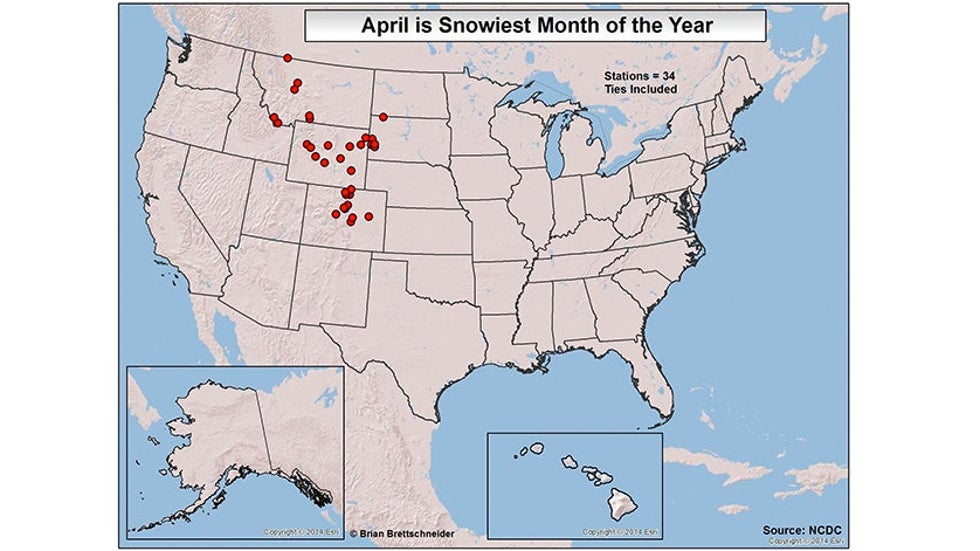 Locations where April is the snowiest month of the year, on average.
Locations where April is the snowiest month of the year, on average.The Weather Company’s primary journalistic mission is to report on breaking weather news, the environment and the importance of science to our lives. This story does not necessarily represent the position of our parent company, IBM.
The Weather Company’s primary journalistic mission is to report on breaking weather news, the environment and the importance of science to our lives. This story does not necessarily represent the position of our parent company, IBM.

No comments:
Post a Comment